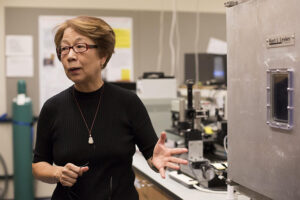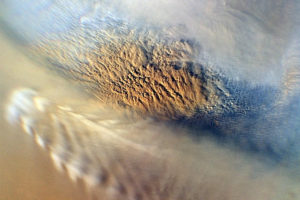17.12.2020

Thinking like Earthlings may have caused scientists to overlook the electrochemical effects of Martian dust storms.
On Earth, dust particles are viewed mainly in terms of their physical effects, like erosion. But, in exotic locales from Mars to Venus to Jupiter’s icy moon Europa, electrical effects can affect the chemical composition of a planetary body’s surface and atmosphere in a relatively short time, according to new research from Washington University in St. Louis.

“This direction of scientific investigation has been largely overlooked in the past,” said Alian Wang, research professor in the Department of Earth and Planetary Sciences in Arts & Sciences. “Researchers are used to thinking ‘inside the box’ based on terrestrial experience.”
Wang’s study in the Journal of Geophysical Research: Planets focuses on amorphous sulfur and chlorine salts found by the Curiosity rover at Gale crater on Mars. The chemical signature of these materials could have been induced by electrochemical processes during Martian dust activities in a relatively short geologic time frame: years to hundreds of years.

Low-strength electrostatic discharge causes electrochemical reactions that transform materials on the Martian surface, Wang explained, causing loss of crystallinity, removal of structural water and oxidation of certain elements like sulfur, chlorine and iron.
“The collective chemical effect of electrostatic discharge can be significant,” Wang said. “This is the core idea of our new study.”
The findings could inform science priorities for the next phase of Mars exploration missions, including NASA’s Perseverance rover, China National Space Administration’s Tianwen-1 lander and rover, and the European Space Agency’s ExoMars lander and rover.
“‘Explore the subsurface’ is the suggestion that we would give to the next phase of Mars exploration missions,” said Bradley Jolliff, the Scott Rudolph Professor of Earth and Planetary Sciences and a co-author on the paper.
“These missions are all seeking evidence for geological and hydrological evolution at their selected landing sites, and they are especially looking for and hoping to collect samples that contain traces of past biological activity,” Jolliff said. “Exploring the subsurface would enable sampling of ancient materials — some of which might still be safekeeping precious biomarkers.”
Quelle: Washington University in St. Louis
